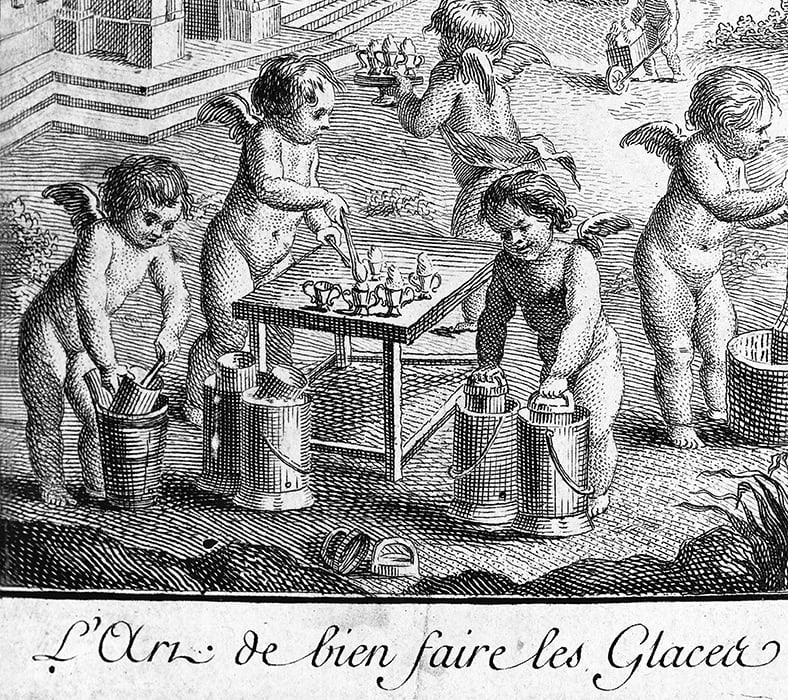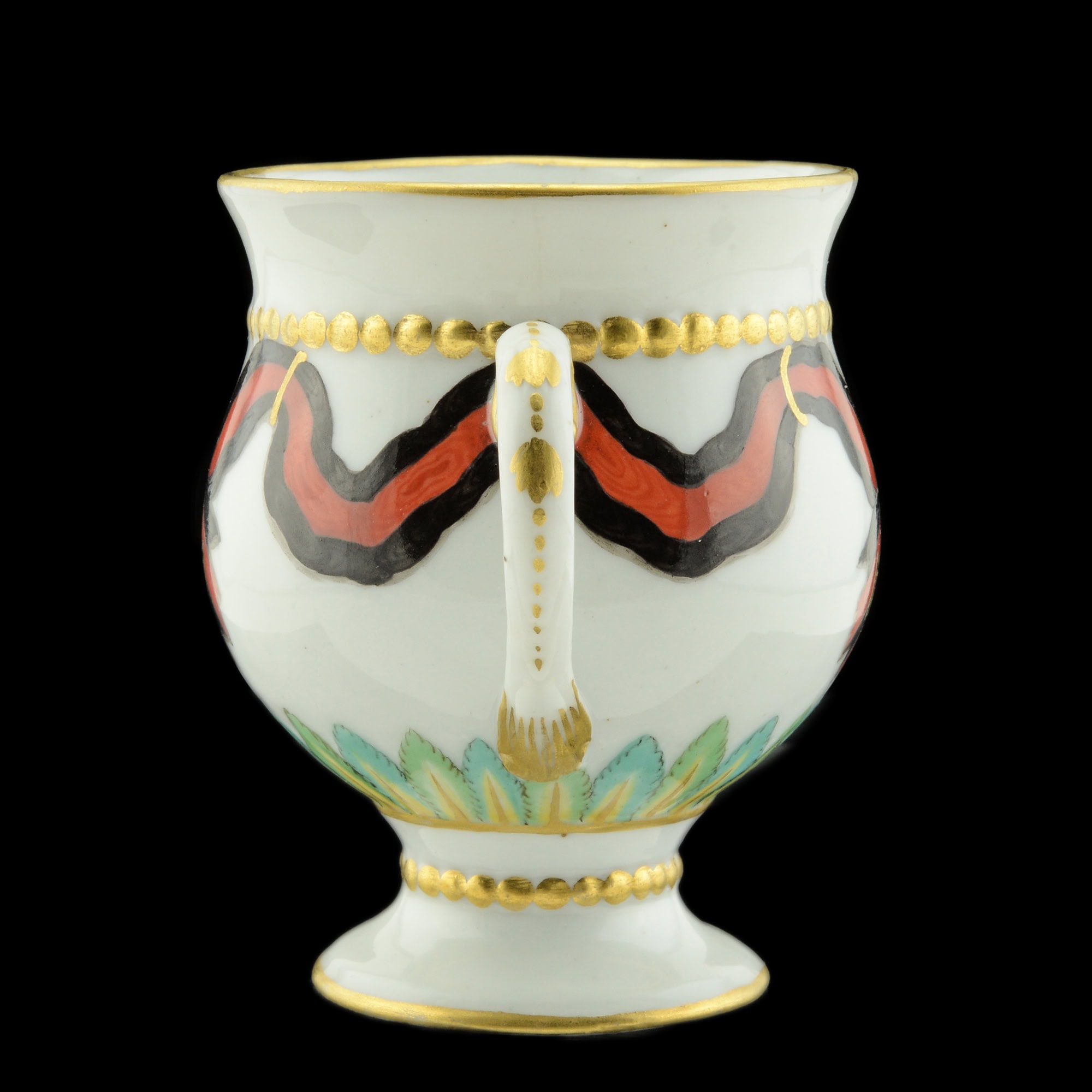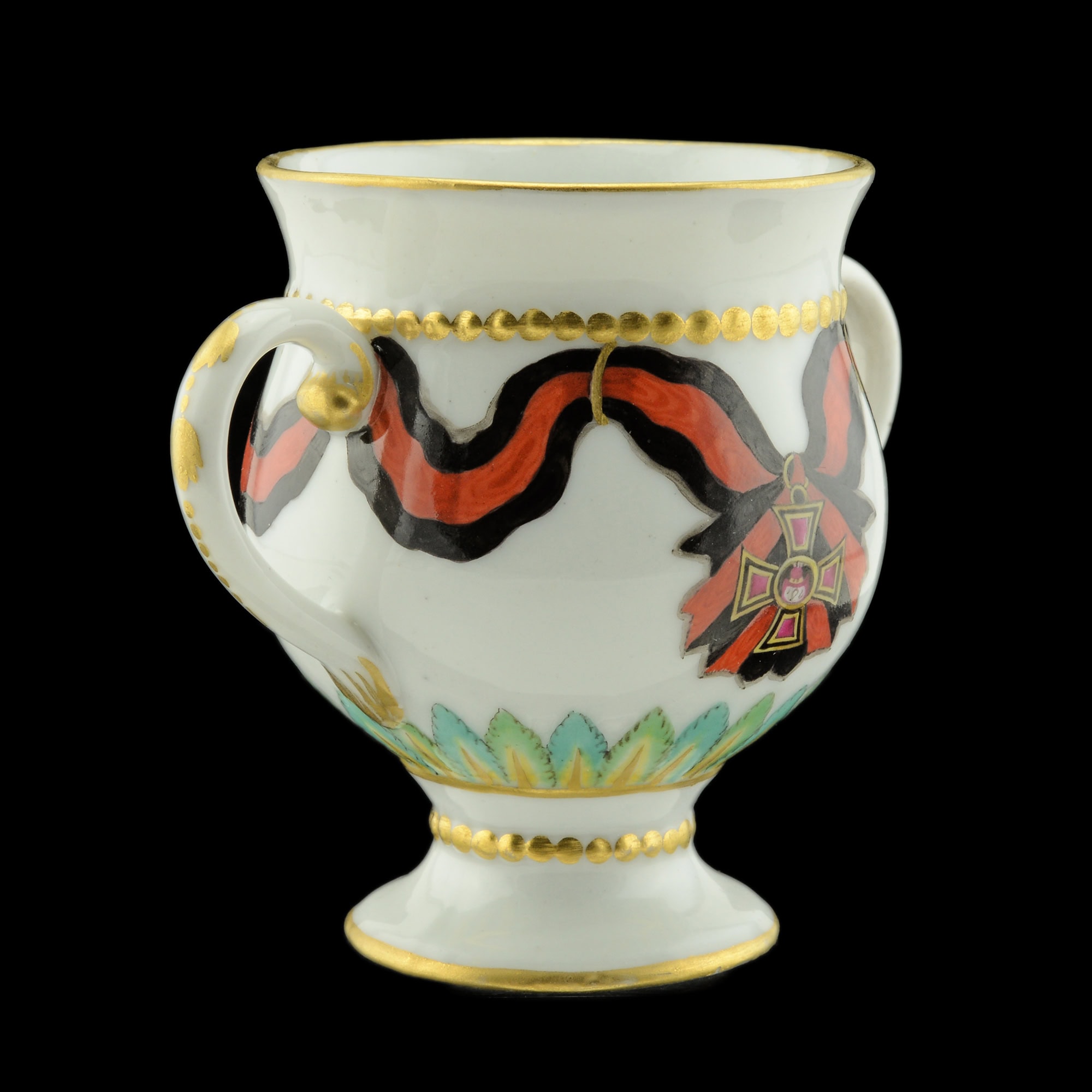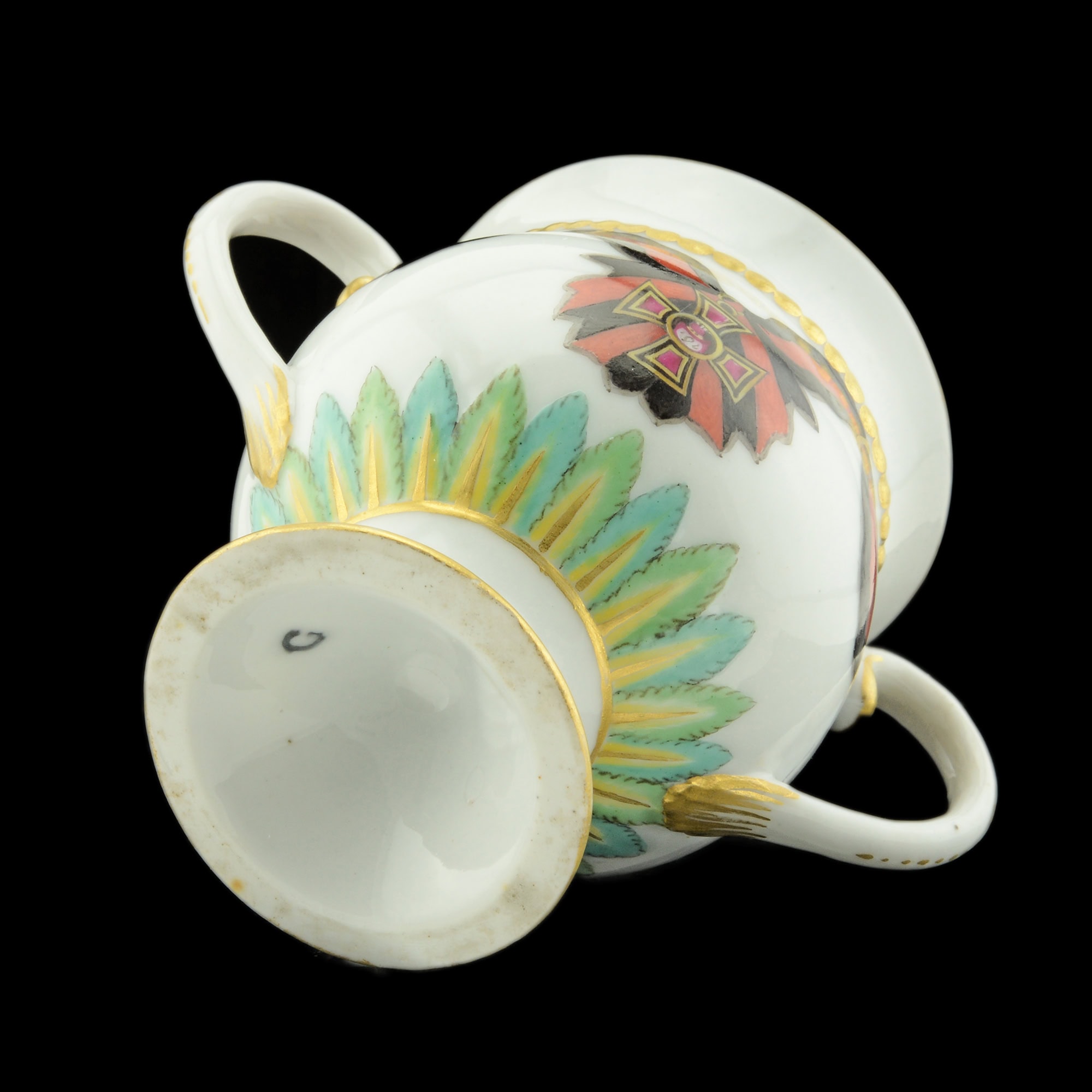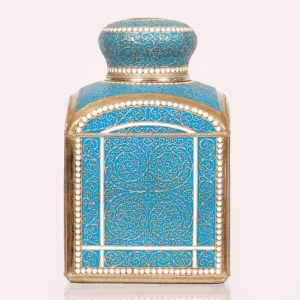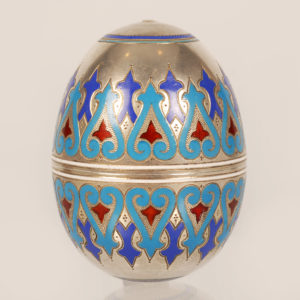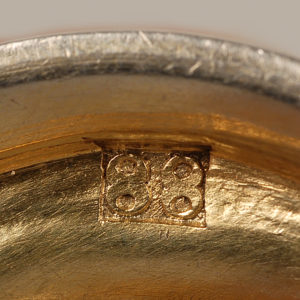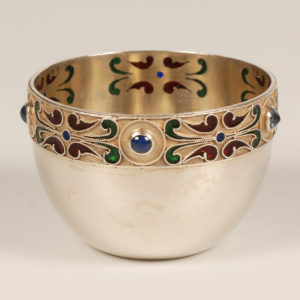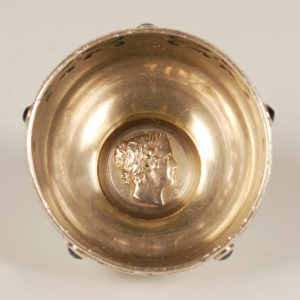Our Antiques
An Extremely Rare Russian Porcelain Ice Cup from the Gardner Factory Order of St Vladimir Service
To order by phone or get more info call us at +1 (425) 271-8950
Description
An extremely rare Russian porcelain ice cup from the porcelain service for the cavaliers of the Order of St. Vladimir, Gardner Factory, 1783-1785. Baluster-shaped with scrolling handles, the body painted with the order’s ribbon badge, raised on spreading circular foot with gilt rim, the base painted with stylized acanthus leaf band, all within molded & gilded beaded borders, the underside with blue factory mark. Height 3 1/4″ (8.2 cm).
In 1782, five years after Empress Catherine II’s Cabinet had ordered the first three of the famed Order Services, the Empress founded the Order of St. Vladimir, in part to mark the twentieth anniversary of her accession to the throne. Credited with having brought Christianity to Russia, Prince Vladimir was canonized by the Orthodox Church & was called “equal to the apostles.” In Russian, this is rendered as Sviatoi Ravnoapostolnyi Kniaz Vladimir & thus the Cyrillic letters SRKV (СРКВ) appear on the star depicted on the service. The Service for the Order of St. Vladimir was first used at the Winter Palace at the ceremony held on the saint’s feast day, September 22, 1785. When the new Order was established, the Empress also named the first eleven members: Field Marshall General Alexander Golitsyn, Prince Grigory Orlov, Count Zakharii Chernyshev, Count Ivan Chernyshev, Count Nikita Panin, Prince Grigory Potemkin, Prince Nikolai Repnin, Ivan Betskoi (Catherine’s private secretary & President of the Imperial Academy of Arts), Ivan Shuvalov (her favorite & member of the Russian Academy), Prince Alexander Bezborodko, & Count Petr Rumiantsev-Zadunaiskii. Prince Golitsyn died in 1783 & was never able to eat the exclusive dessert from a rare porcelain cup like this one.
By 1768, eating ices & ice creams had become popular enough among European royal & noble gourmands that M. Emy could devote an entire book to the topic. His L’Art de bien faire les glaces d’office ou, les Vrais Principes de congeler des tous les Rafraîchissemens (The Art of Making Ices or, The True Principles of Freezing All Sorts of Refreshments), published in Paris, was a text for both chemists & epicures; the chapters discussed the history of the refreshing treat as well as providing a detailed technical description of the process of using salt to depress temperature. The expense of salt as well as the ingredients themselves limited their consumption to the tables of empresses, kings, or the nobility. (Ice cream did not become widely available in Europe & the Americas until the late 19<supth</sup century.)When Emy discussed the presentation of ices, he illustrated a small ‘ice goblet’ (gobelet à glace) almost identical in form to the ice cups of this service. The book’s frontispiece depicts a group of putti preparing ices to take to the gods in heavens; the hard-working amours are scooping the dessert into the same tiny sort of cups. The inclusion of this form in the service was particularly appropriate for an order that celebrated the achievements of the most distinguished men at the court of Catherine II.
Contact Us
Subscribe to receive our newsletter and new acquisitions


